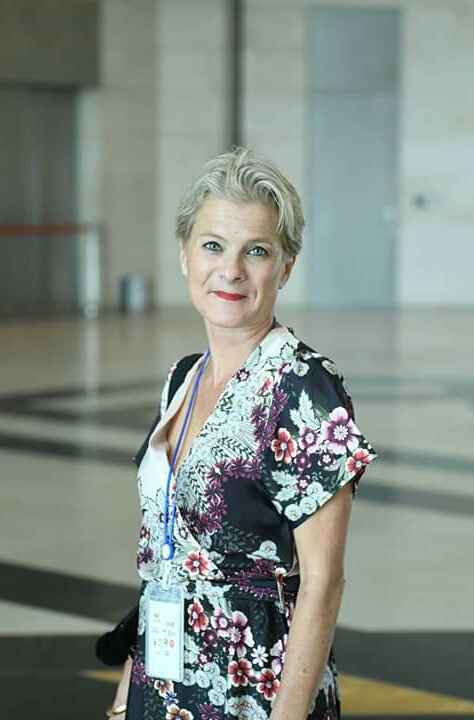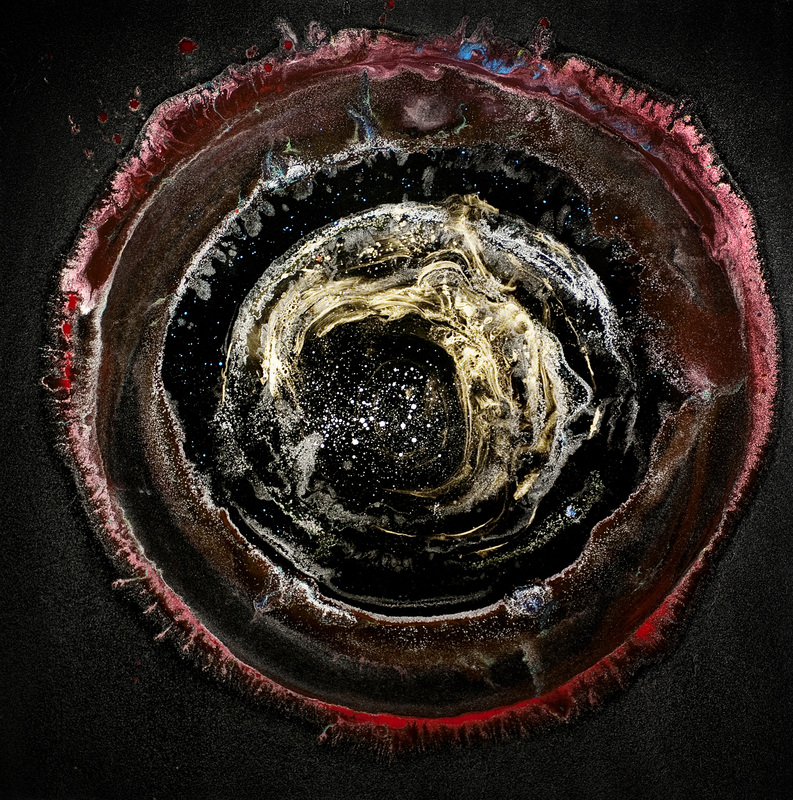How are influences impressioned upon our minds? More importantly, are our conscious and unconscious mental patterns impermeable vines in a mental jungle growing ever more impenetrable, or can they be dissolved? What is the fast track to mental clarity?
Arianna has asked me to write about dreams and I will. Dreams are a vital part of human life as a platform of awareness for orientation, navigation and expansion of consciousness. There’s no chicken and egg here, but I’d like to start with some important characteristics of the waking state before exploring the dreamscape.
Let’s use abstract art as an example of how we use our consciousness to orient ourselves when something unknown is placed before us. We can quickly see how novel or random impressions get processed by the mind.
I often have visitors to my painting studio in France, who look at works and begin their visual exploration of a work by saying ” it looks like a….”. What these viewers are doing, is looking into their past experience for references to compare with their current experience. They search their past impressions and categories of mental processing to “tell” them what they are looking at. Ok, but what they are doing, is remoulding what is before them into something it is not. In the strictest sense, they are deforming their experience by reforming it to fit an existing concept.
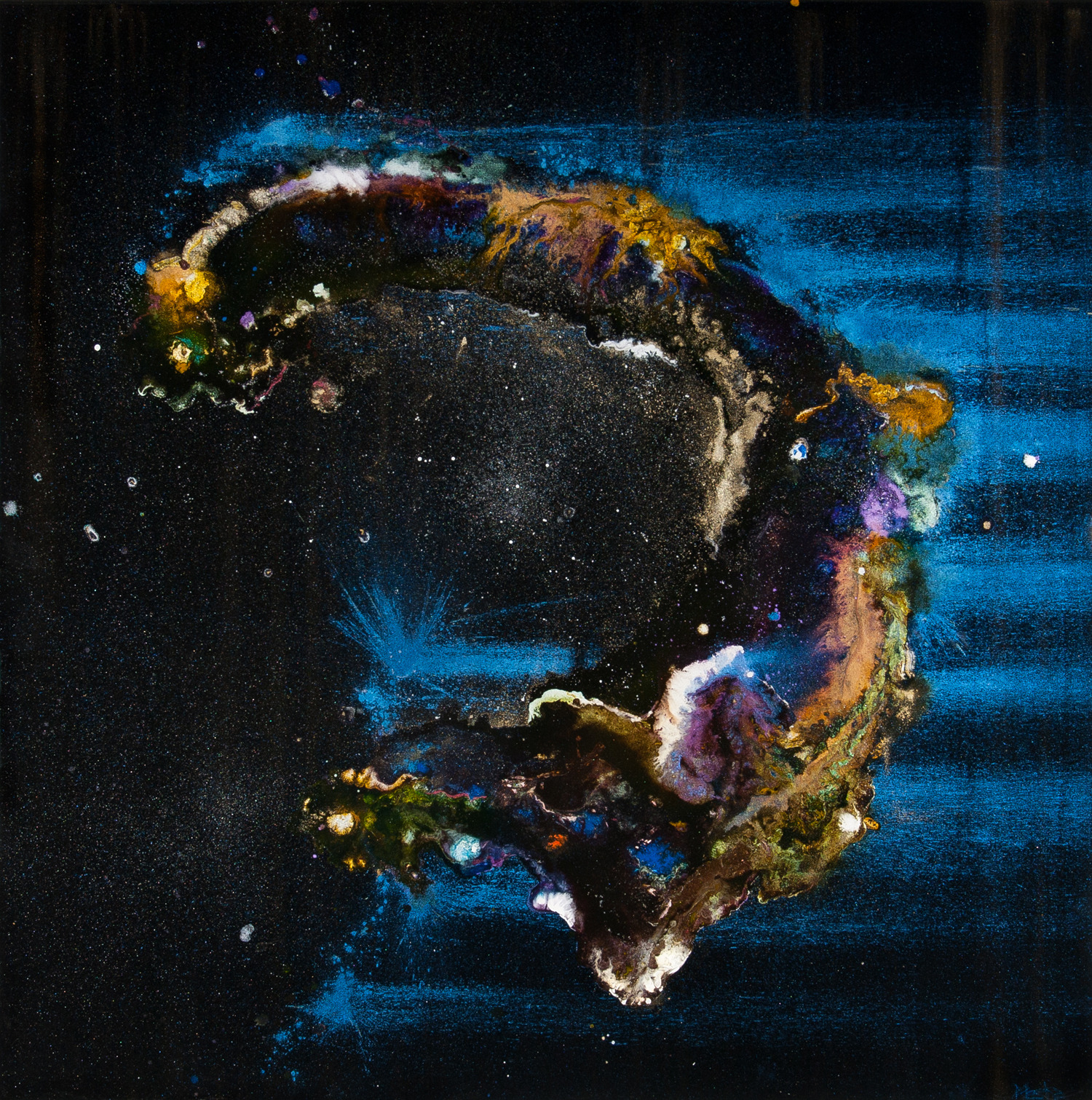
In fact, they are looking at something they have never seen before, so all their past references are not helping them see clearly what is there.
A mental process is obscuring what is present in the painting, turning it into something associable with something known. We do this every day.
We do this so many times everyday and night, that what truly is before us; The shifting nature of potential and manifest existance, is barely even seen.
An example, we meet someone new. Almost automatically, we look for characteristics that remind us of other people we have known to categorise the new person. Falsely, attributions are assigned and then sought to understand the correctness of our impressions. In doing this, we can only create an obscuration, a lens, one that we then view the new person through. What’s so fascinating about this habit of mental orientation, is that what we look for, we find.
Huge implications both for ourselves and the other person are created almost unconsciously by such lenses.
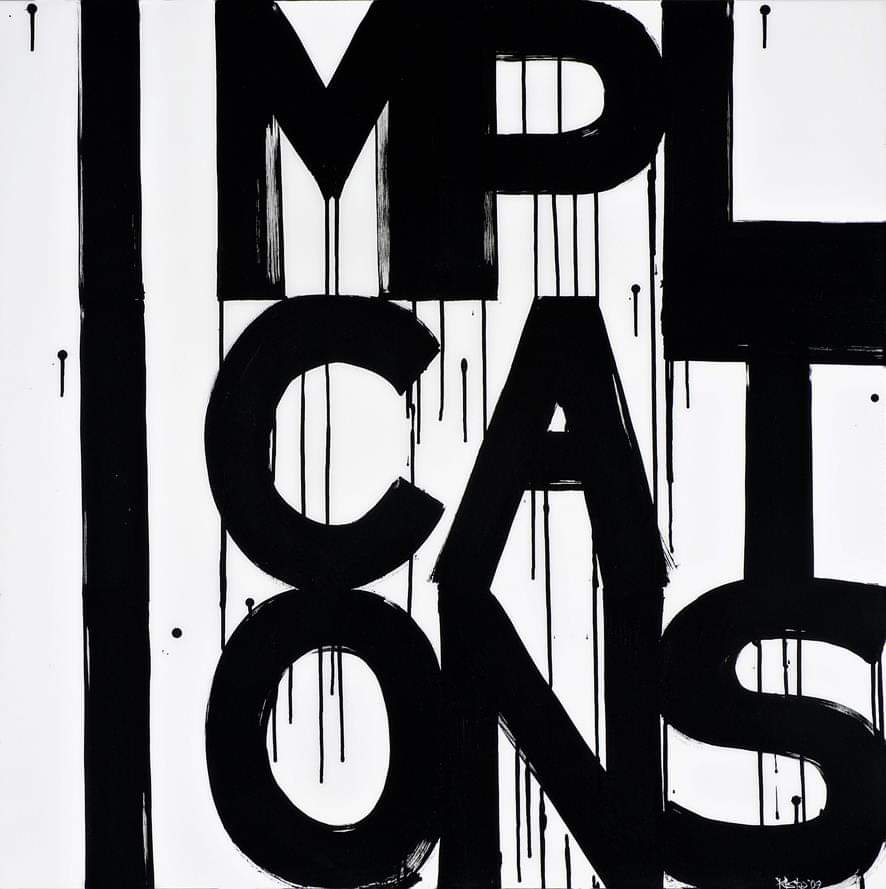
Primarily, the other person has been placed in an ‘ever-seeking confirmation paradigm’ that we focus through. What we are doing is attempting almost subconsciously, to confirm the existance of our impression by looking for evidence which we flag to our conscious mind and we say to ourselves and perhaps aloud, “Just look, when Joe gets agitated or excited he fidgets with his glasses, just like Uncle Bill. Joe reminds me so much of of Uncle Bill.” The weird thing is, it may be unusual for Joe to fidget with his glasses when he is excited and he realises, that when he is in our company, he behaves in this way.
What’s more, Joe may feel as if he is possessed by something behaving like this when he is within our ever forming pre-conceptions. Joe is possessed by something, the perceiver’s expectations. These expectations are unspoken and yet, like the quantum particles that pass through the slit anticipated by the experimenter, we affect the fabric of atomic existance simply by expectation. The whole well-being movement of “Abundance” draws from the same well of this phenomenon, but that’s another story.
The point to be aware of here, is that unless Joe is totally conscious of himself, as a flow of experience in interaction and as a sovereign witness to these flows, he feels somehow caged by these bizzare urges caused by being in the company of someone else’s mental presets.
The perceiver/categoriser aspect of mind, holds a power we’re about to look at, because we all have this mental power. Indeed, we use it everyday and it effects our entire understanding of what we are interacting with as participants in life.
Humans are moulders of perception and lived reality.
Think back into your own experience and you will be able to identify people who, when you are in their company, impel you to behave in a way that you don’t normally engage. I call this “emplacement”. Somehow, you play out the expected behaviours and feel somewhat discombobulated in the instants it is happening. You may even realise, you don’t normally use those terms, or speak in that tone, or feel that way when that person isn’t present.
The whole interaction becomes a playing field for our expectations also to engage the dynamic. Noticing that it’s happening, can fall completely out of conscious awareness, because if the dynamic is prolonged and expanded, the behaviour establishes from the repeated impression of the emplacement. Now we find ourselves acting under the emplacement with other people too. So what used to be, ‘this behaviour only happens when I’m with X’, now happens with the people at work, socially and so on. You can see how the lenses influence. A never openly revealed expectation, becomes an actual occurance in our own lives. For the perceiver/categoriser, that’s one expectation confirmed, for Joe, that’s one emplacment engaged habitually and he fidgets with his glasses (until he becomes aware that the behaviour doesn’t feel authentic and stops it consciously). Let’s unpack this further.
The false nature of categorising and expectation passes across the realms of ‘resonance’ between beings, almost without a whisper; The whole pattern of influence become ‘real’. But it isn’t real, it’s an influence upon the mental set of what we believe we know about the subject of our analysis; An analysis influenced by past impressions emplaced as our holographic inner representation of others.
We can see clearly how this can get completely confusing. Most people by a certain age, are a combination of emplacements, taken on as personal habits and characteristics and a lost sense of sovereign self that feels misunderstood and caged.
Where is the key to becoming aware and free of this? In the rest of this article, I’m going to ask three questions randomly in the text. Please stop as you read them and notice the question mark in your mind, allowing it to get longer and longer. At first you may jump at an answer but by the third question, hopefully you will leave you mind hanging and feel it hanging. It’s for you to notice that ‘suspended-aware-unfilled-pause’ in your mental landscape.
First question: What sound does the colour green make?
Apart from wrestling with the seemingly illogical nature of the question, you may have done a check on audio engineering to answer the question or looked at synesthesia. Maybe you thought about frequency healing and reached deep for Scriabin’s Theory. Sound frequency (as a compression wave) and light frequencies (as electromagntic waves) are a fascinating topic in themselves and our human perception is almost totally inadequate to render the subject into experience. I suspect this is why the inner experiences (those engaged without physical sense organs) of sound and colour are more revealing. We digress. But that is the analytical mind for you, always looking for how things relate and what-it-all means, as a cohesive knowable phenomena. That’s not the point, the point here is how long the question mark could hang before the mind sought an answer and how that hanging was experienced.
Let’s go again. When a butterfly lands on a flower, what sensation does it have first ? Pause.
If your mind is wobbling and you don’t know really, just leave the question.
How easy is that? Has boredom tried to derail you? Is there some kind of conflictual argument happening? Don’t let that have much of your attention. Just observe your mind. So, butterfly on a flower. But you’ve never been a butterfly, so in truth, you don’t know. Hold that question mark. Feel your mind trying to redirect itself to something more solid, a concept, a pressing whatever you have to do. Confounding little monkey the perceiving mind isn’t it? Wants to be moving and holding onto thought vines constantly in the mental jungle of impressions and associations.
Last question: Before you thought your first remembered thought/impression, who were you? Remember the thought/impression, now go back a day. Close your eyes to do this.
If your mind went blank and just stood still in a kind of vacant aware ‘day dreaming’ suspension, that’s the silent observer. The Witness. You without associations, orienting thoughts, or a mental paradigm to hang experience upon. You as a clear light consciousness simply aware, not holding onto any impression.
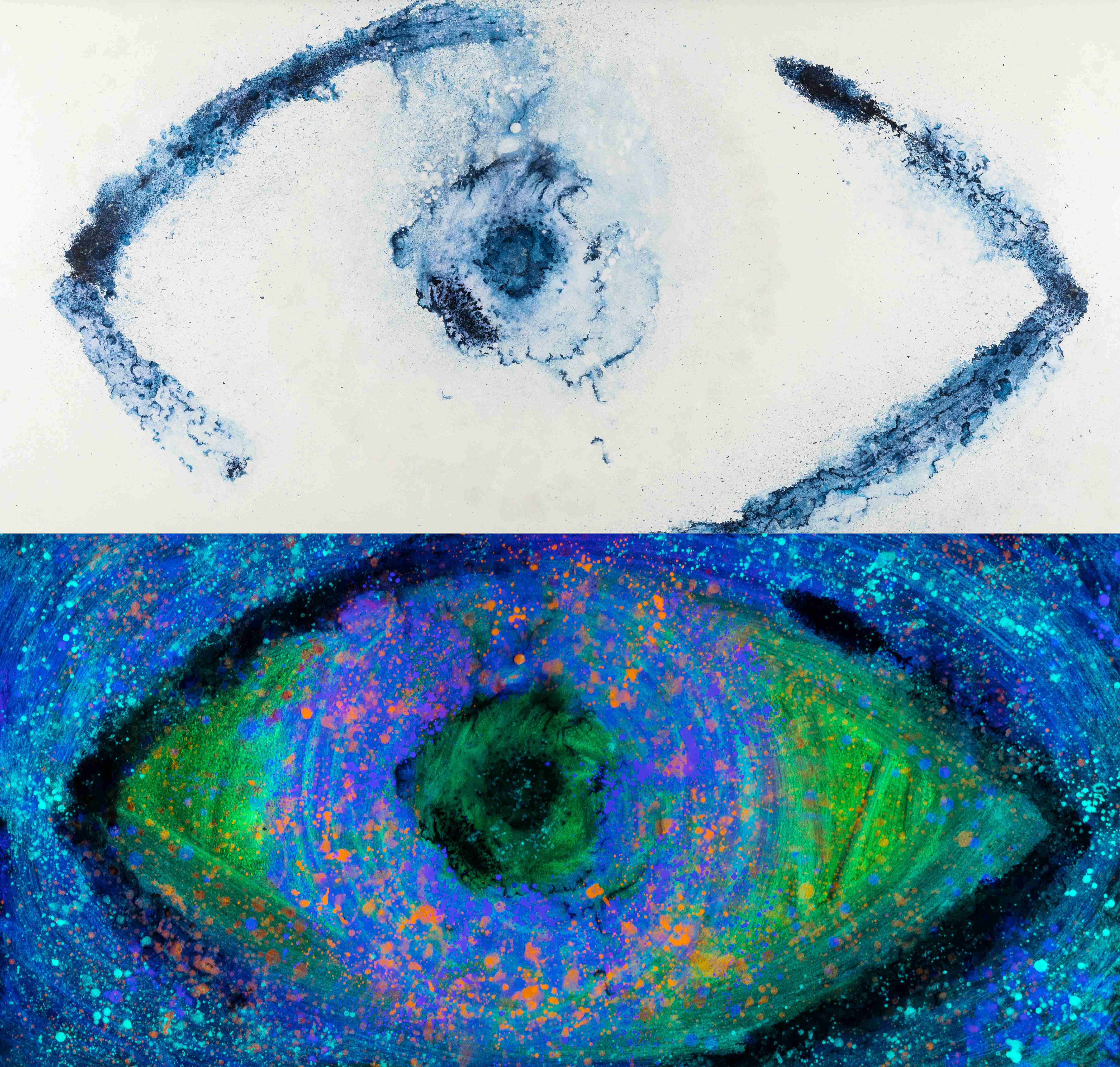
That Witness of crystal clear awareness is ‘underneath’ understand, between and within, the entire dynamic of mental impressions, subconsciously compelled urges and hooks your mind clings to, in the learned adaptation jungle of a human DNA entwined existence.
To witness and not judge is a prolonged question mark, held in an unlimited space, simply experiencing without using the past as a reference point.
Incidentally, that is the best seat in the house when viewing people, art and ourselves. Wide eyed, in the pause, completely serene, open. Uninfluenced simply aware.
It’s that freedom that is key to uncaging others before your mind categorises them, and the same key that unlocks your ever expanding awareness. When you can hold this key, the pause in the questioning, life is a realm of unfolding wonder and the dreamscape changes entirely, as does how you experience the unknown. Useful key that.

